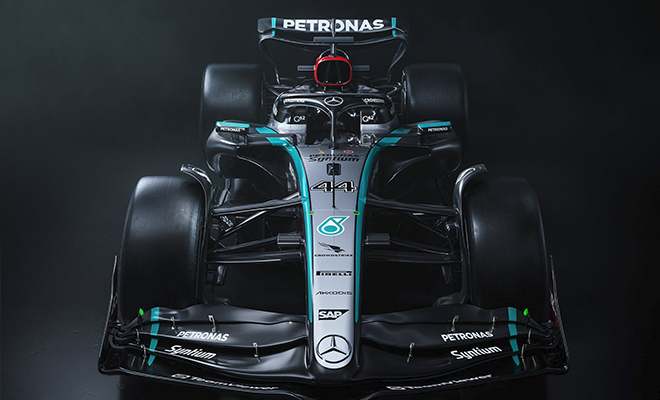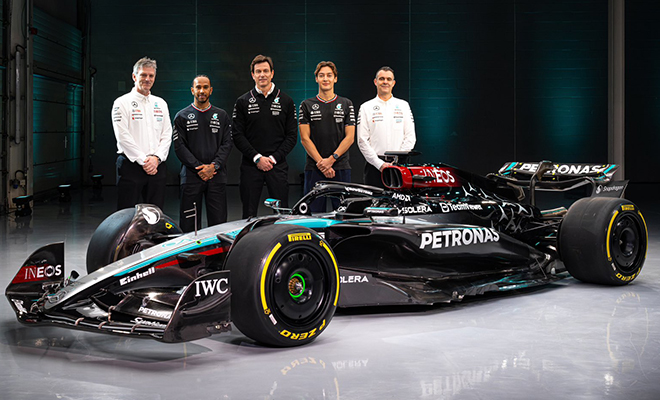Explore the journey of creating the W15, where Mercedes HPP and a top F1 team’s technical leaders unveil the blend of innovation and strategy in pursuit of racing excellence.
In an insightful interview with James Allison, the Technical Director of a top Formula 1 team, and Hywel Thomas from Mercedes HPP, the engine department director, we delve into the intricate process of developing the W15 race car for the 2024 season.
This discussion reveals a meticulous and iterative design approach that focuses on overcoming previous limitations and setting new benchmarks in performance and reliability within the stringent confines of F1 regulations.

W15 Design: Balancing Stability, Speed, Innovation
James Allison outlines the iterative nature of race car design, a process that begins long before a new model’s unveiling. The development of the W15 was rooted in lessons learned from its predecessor, aiming to address identified weaknesses while building on existing strengths.
A significant area of focus was the car’s rear stability, which had been unpredictable in the past, affecting driver confidence and performance.
Efforts were made to enhance the rear’s stability during critical phases of cornering, aiming for a balance between solidity and agility that would reassure the drivers and improve lap times.
Moreover, the team concentrated on reducing drag and improving cornering performance, including optimizing the Drag Reduction System (DRS) and pit stop efficiency.
Allison emphasizes the critical nature of iterative improvement and the deployment of resources across departments to solve complex engineering challenges.
This year, significant layout changes were considered, including the engine’s placement and the geometry of the rear suspension and gearbox, which are typically not feasible mid-season due to their high opportunity cost.
Reflecting on the progress and outcomes, Allison expresses cautious optimism. While satisfied with the achievements, he acknowledges the relentless pursuit of perfection inherent in Formula 1’s competitive environment.
The development process was notably impacted by budget caps, forcing the team to prioritize major projects carefully. Despite these constraints, Allison believes the team has made strategic use of its resources, focusing on areas like chassis and gearbox development alongside aerodynamic improvements.
Mercedes HPP: Engine Innovation and Teamwork
Hywel Thomas from Mercedes HPP shares insights into the engine department’s priorities, highlighting the challenges of developing engine performance and reliability under current regulatory limitations.
With a focus on reliability upgrades and software enhancements, Thomas underscores the importance of collaboration between the engine team in Brixworth and the chassis team in Brackley.
This synergy is crucial for integrating engine improvements with the car’s overall design, ensuring that cooling systems and other components function seamlessly together.
The partnership between Brixworth and Brackley has been instrumental in navigating the challenges of recent years, particularly with the introduction of budget caps and the anticipation of regulatory changes in 2026.
Thomas highlights the importance of each department understanding its role in the puzzle, pushing boundaries to contribute to the car’s success.
The allowance of four power units per driver this season, a late regulatory amendment, is seen as a critical factor in managing the longest calendar in F1 history.
Both Allison and Thomas emphasize the importance of reliability and performance, acknowledging that the journey to the season’s start is fraught with anticipation and the drive for continuous improvement.
Mercedes HPP’s pride in supporting customer teams with competitive engines reflects a broader commitment to excellence and innovation.
As the new season approaches, the team’s focus on overcoming engineering challenges and maximizing the potential of the W15 and its power unit underlines Formula 1’s relentless pursuit of technological advancement and competitive edge.
W15 F1 Performance Innovation. W15 F1 Performance Innovation
- ReadMore>Russell Lauds Mercedes’ Push to Reclaim F1 Glory
- Following us on Facebook and Twitter.
